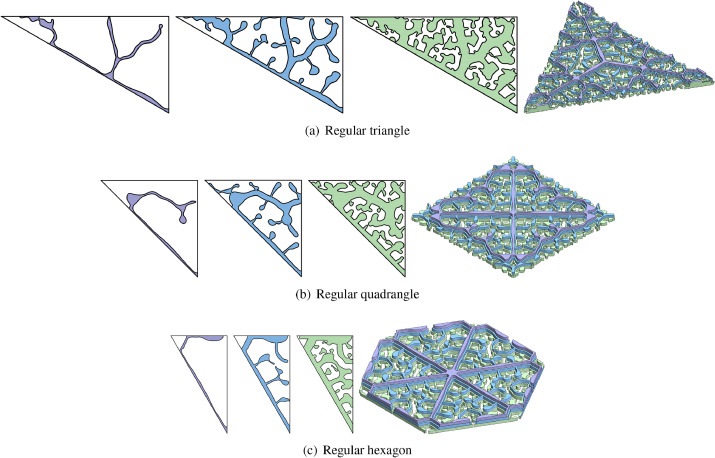
Yongbo Deng, Zhenyu Liu, Yasi Wang, Huigao Duan, Jan G. Korvink
Aplied Mathematical Modelling, 2019
Robust Cassie–Baxter wettability of a rough solid surface with micro-textures is a key factor for stable hydrophobicity. Overlayed micro-textures are potentially more effective in ensuring the robustness of the surface properties, because of the layer-by-layer increase of the duty ratio and their effective approximation of the full hierarchy. However, a design methodology that includes considering manufacturability is lacking. In this article, we address this deficiency and present a monolithic inverse design approach, composed of a series of topology optimizations, to derive micro-textures with hierarchy approximated by overlayed geometries. The optimization are implemented in a dimensionless manner using a periodic regular-polygon tiling of the plane, in which the corresponding dimensionless Young-Laplace equation is used to describe the physics at the liquid/vapor interface. Two sequential and neighboring optimization tasks are linked through the design domain of the downward layer, determined by a conformal extension of the physical density representing the pattern of the upward layer. This ensures the manufacturability e.g. for an overlayed lithography process. Layer-by-layer robustness enhancement is thereby achieved, and the capability to anchor the three-phase contact line after the collapse of the liquid/vapor interface supported by the upward layer. In generating the overlayed micro-textures, a rigorous scaling factor for the patterns was determined, leading to a recursion inequality based on the depth of the liquid/vapor interfaces at the critical static pressures that determines the extrusion distance of the patterns. The trace height and minimal aspect ratio of the micro-textures are specified by the scaling factor and extrusion distance for a layer. This allows a compromise between performance and manufacturability, and thereby avoid instabilities caused by elasto-capillary collapse of the micro-/nano-structures. We computationally confirm the optimality by comparing the derived micro-textures with previously reported designs.